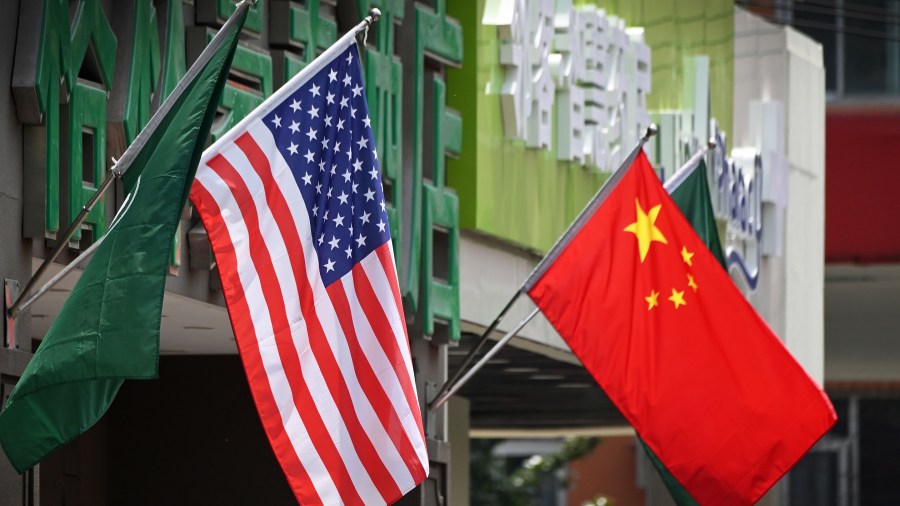Forced tech transfers happen. But how do they actually work?

Forced technology transfers don’t typically start with an explicit threat from a Chinese official to hand over a trade secret or lose the ability to operate there. Instead, it’s murkier, perhaps a verbal request for sensitive information behind closed doors as part of the Chinese government’s licensing or approval process.
It’s tough to say how prevalent the practice is, said Naomi Wilson, director of policy who focuses on Asia at the Information Technology Industry Council, a tech trade group. Marketplace’s Tracey Samuelson spoke with her about the most common ways foreign firms are pressured to give up some of their intellectual property. The following is an edited transcript of their conversation.
Naomi Wilson: We see a couple of most prominent ones in the cybersecurity review regimes that the Chinese government has established, which are very ambiguous. So companies are often not entirely sure of what compliance means, and they may be getting different direction depending on the enforcement arm of the Chinese government that contacts them.
The other area where we see this is in forced partnerships with Chinese companies. So in the cloud services market, in particular, foreign companies cannot obtain licenses to operate on their own. It’s the Chinese partner that obtains the license and that runs the operation under their own brand name for the U.S. or foreign company.
Tracey Samuelson: And so the idea is when you’re required to work with a Chinese partner, you’re required to share how your business works with that local firm?
Wilson: Right. So think of it this way: Essentially, the forced partnerships give a Chinese company the inside track on how the best cloud services providers in the world operate their businesses.
Samuelson: So it’s sort of like a master class in the business of cloud services, but it’s not necessarily like, “Here’s some valuable piece of code that makes our business run”?
[The Chinese are] basically learning from the experts at a much faster pace than they would be able to develop this type of business model on their own.
Naomi Wilson
Wilson: Right. They’re basically learning from the experts at a much faster pace than they would be able to develop this type of business model on their own. The close coordination between the foreign cloud service provider and the Chinese partner also does lend itself to circumstances where individuals may be privy to information, such as intellectual property, that they might not otherwise be. But I also think it’s fair to say that companies take very specific and concrete measures to safeguard their intellectual property, which, of course, is the lifeblood of their business.
Samuelson: And it seems like when companies do the math — calculating the cost of forced tech transfer versus the opportunity that they have to operate in China — they often move forward with their Chinese operations.
Wilson: Right. And it’s interesting that you bring up the cost and the potential cost of operating in China and the potential negative cost. I think companies more and more have to factor in the costs of dealing with U.S. policies as well as Chinese policies in the current climate. China is an exceptionally influential and large market. So pulling out of China completely, for many companies, is not an option because it would put them at a competitive disadvantage, not only in China, but globally. If you’re not in China and you’re not a recognized name brand in China, then what are the prospects for success in the rest of Asia?
Related links: more insight from Tracey Samuelson
The U.S. Trade Representative investigated forced tech transfers in China last year.
Also, Bloomberg put together a helpful question-and-answer piece on tech transfers a few days ago. It includes a roundup of high-profile court cases where companies have alleged they were forced to share their secrets (and the idea is that when you’re working with a Chinese partner, you’re required to share how your business works with that local firm).
The future of this podcast starts with you.
Every day, the “Marketplace Tech” team demystifies the digital economy with stories that explore more than just Big Tech. We’re committed to covering topics that matter to you and the world around us, diving deep into how technology intersects with climate change, inequity, and disinformation.
As part of a nonprofit newsroom, we’re counting on listeners like you to keep this public service paywall-free and available to all.
Support “Marketplace Tech” in any amount today and become a partner in our mission.












